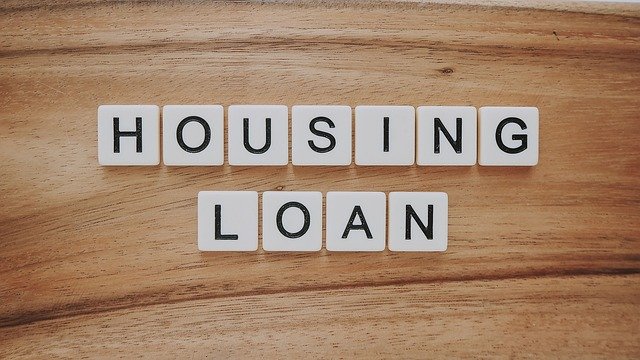Buy a Home Without a Mortgage in the UK: A Guide to Rent-to-Own
Buying a home in the UK without taking out a mortgage is possible through rent-to-own schemes, which combine tenancy with a future purchase option. This guide explains how these agreements work, the benefits and risks involved, and what to consider before signing. It's a practical alternative for individuals who may not qualify for traditional financing but still aim to step onto the property ladder.

For many UK residents, the dream of homeownership can feel unattainable due to strict mortgage lending criteria, insufficient deposits, or credit history issues. Rent-to-own schemes, also known as rent-to-buy or lease-option arrangements, provide an alternative route to property ownership. These innovative housing solutions allow prospective buyers to rent a property with the option or obligation to purchase it after a predetermined period, potentially making homeownership accessible to those previously locked out of the market.
How do rent-to-own housing schemes work in the UK?
Rent-to-own schemes typically follow a structured process. Initially, the prospective buyer enters into an agreement with the property owner or scheme provider. This agreement includes a standard rental period (usually 2-5 years) during which the tenant pays rent, often slightly above market rate. The additional premium is typically allocated toward the future purchase of the property, forming what’s called a “rent credit.”
The agreement includes an option-to-buy clause, which gives the tenant the right to purchase the property at a predetermined price once the rental period ends. This price is usually agreed upon at the beginning of the contract, protecting the tenant from market fluctuations during the rental period. Some schemes also require an initial option fee (around 1-5% of the property value), which may be counted toward the eventual purchase price.
Many UK rent-to-own schemes are run by housing associations, local councils, or private companies specializing in alternative housing solutions. Government-backed schemes like Rent to Buy and Shared Ownership also operate on similar principles, though with specific eligibility criteria and terms.
What are the pros and cons of buying without a mortgage?
Advantages
Rent-to-own schemes offer several benefits for prospective homebuyers. First, they provide time to build or repair credit histories while already living in the future home. This period allows tenants to address financial issues that might prevent mortgage approval. Second, these arrangements lock in the purchase price at the beginning of the agreement, protecting buyers from rising property values in desirable areas.
Another significant advantage is the ability to “test” the property and neighborhood before committing to purchase. If the tenant discovers issues with the property or decides the area isn’t suitable, they may have the option to walk away (depending on contract terms). Additionally, the rent credit system helps accumulate part of the down payment over time, making the eventual purchase more manageable.
Disadvantages
Despite these benefits, rent-to-own arrangements come with notable drawbacks. Tenants typically pay premium rent rates, which can strain monthly budgets. If the tenant ultimately doesn’t purchase the property, these premium payments and any option fees are usually forfeited.
There’s also the risk of property value fluctuations. If the market declines significantly, the tenant may be contractually obligated to purchase at the previously agreed-upon higher price. Furthermore, responsibility for maintenance and repairs often falls to the tenant during the rental period, unlike in traditional rental arrangements.
What legal points should be checked before signing a rent-to-own agreement?
Before committing to a rent-to-own agreement, thorough legal scrutiny is essential. First, ensure the contract clearly states the purchase price or the method for determining it at the end of the rental period. The agreement should also explicitly outline what happens to rent credits and option fees if either party breaches the contract or if the tenant decides not to purchase.
Property maintenance responsibilities should be clearly defined—who handles major repairs, regular maintenance, and associated costs during the rental period. The contract should also address what happens if the property owner faces financial difficulties, such as bankruptcy or foreclosure, during the agreement term.
It’s crucial to verify that the seller actually owns the property free of encumbrances that could affect the eventual sale. Have a solicitor check for any liens, outstanding mortgages, or other claims against the property. Additionally, ensure the contract includes provisions for property inspections before both the rental period begins and before the final purchase.
What are the typical eligibility requirements for rent-to-buy homes?
Eligibility for rent-to-own schemes varies depending on whether they’re privately operated or government-backed. Most schemes require applicants to demonstrate stable income sufficient to cover both the premium rent payments and the eventual mortgage. Credit history requirements are typically less stringent than for conventional mortgages, making these schemes accessible to those with minor credit issues.
For government-backed programs like Help to Buy: Rent to Buy, applicants usually need to be first-time buyers or those returning to the housing market after relationship breakdown. Income caps may apply, with priority often given to key workers, local residents, or military personnel. Housing association schemes may have specific local connection requirements or prioritize certain demographic groups.
Private rent-to-own arrangements might have fewer formal eligibility requirements but still require proof of income stability and basic financial checks. Most schemes require tenants to demonstrate a credible path to mortgage eligibility by the end of the rental term.
What financial planning tips can help in completing the purchase later?
Successful transition from renting to owning requires careful financial planning. Start by establishing a dedicated savings plan beyond the rent premium payments to accumulate additional funds for the eventual down payment and closing costs. Consider setting up automatic transfers to a separate account specifically for this purpose.
Focus on credit repair and enhancement during the rental period. This includes paying all bills on time, reducing existing debt, avoiding new credit applications, and correcting any errors on your credit report. Regularly monitor your credit score and address issues promptly.
| Provider | Scheme Type | Typical Contract Length | Minimum Deposit Required | Purchase Price Determination |
|---|---|---|---|---|
| Housing Association Rent to Buy | Government-backed | 5 years | None upfront | Set at beginning of contract |
| Gentoo Genie | Private scheme | 25 years | 2% of property value | Increases annually by RPI + 2% |
| Heylo Home | Part buy-part rent | 5-10 years | 10% of share value | Market value at time of purchase |
| Your Housing Group | Rent to Buy | 5 years | None upfront | 80% of market value at time of purchase |
| Places for People | Shared Ownership | 5+ years | 5-10% of share value | Market value at time of purchase |
Prices, rates, or cost estimates mentioned in this article are based on the latest available information but may change over time. Independent research is advised before making financial decisions.
Consult with a mortgage advisor early in the process to understand exactly what you’ll need to qualify for a mortgage by the end of the rental period. They can provide a roadmap of financial milestones to achieve before applying. Consider working with financial advisors who specialize in alternative homebuying arrangements to optimize your strategy.
Regularly reassess the property’s market value during the rental period. If it appears to be declining significantly below the agreed-upon purchase price, discuss options with legal counsel before the purchase date arrives. Conversely, if values are rising rapidly, you may benefit substantially from your locked-in price.
Rent-to-own schemes represent a viable alternative path to homeownership for many UK residents facing barriers to traditional mortgage financing. While these arrangements offer flexibility and opportunity, they require careful consideration of legal terms, financial commitments, and long-term planning. By understanding how these schemes work and approaching them with thorough preparation, prospective homebuyers can determine whether rent-to-own is the right strategy for their unique circumstances.




